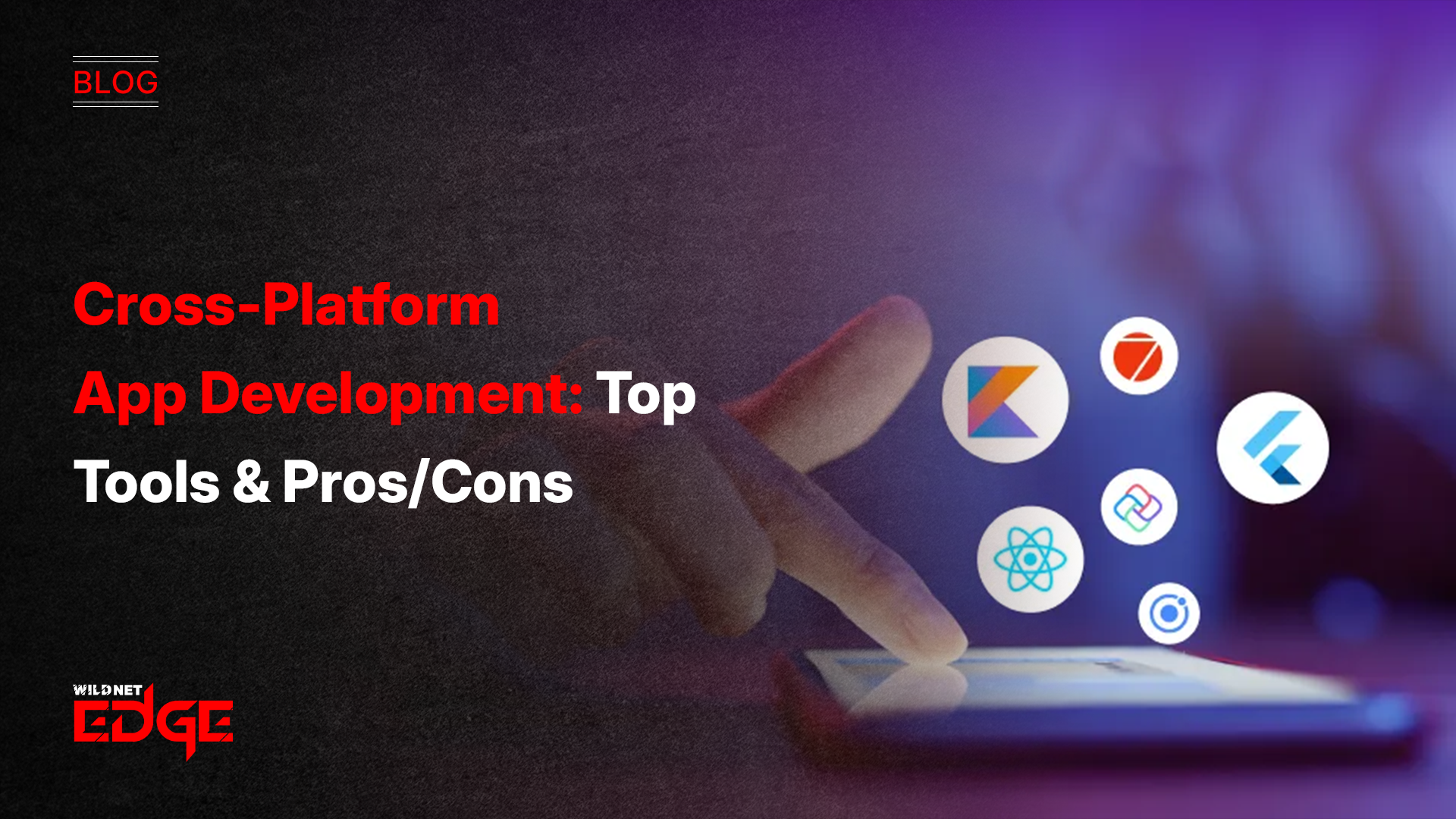Struggling with building an app that works seamlessly across iOS and Android without breaking the bank or doubling your workload? You’re not alone. Cross-platform app development is the key to unlocking faster launches and broader reach—but choosing the right tools and strategies can feel overwhelming. In this guide, we’ll cut through the noise around cross-platform app dev, unpack top tools like Flutter vs React Native, and show you how a hybrid app strategy can save time and costs. Let’s dive deep so you make smarter, more profitable decisions.
Flutter vs React Native: Choosing Your Cross-Platform Development Framework
When it comes to cross-platform app dev, Flutter and React Native stand out as front-runners. Both frameworks allow developers to write a single codebase that runs on iOS and Android, but their philosophies and implementations differ — shaping your app’s performance, look-and-feel, and scalability.
What Are Flutter and React Native?
- Flutter, created by Google, uses the Dart programming language and compiles to native code, offering a highly customizable, pixel-perfect UI and fluid animations.
- React Native, developed by Facebook, uses JavaScript and React to bridge native components, allowing for dynamic UI building with near-native performance.
Popularity and Use Cases
React Native boasts a bigger community due to its JavaScript foundation, powering apps like Instagram and Skype. Meanwhile, Flutter has seen rapid adoption since 2017 for visually intensive apps such as Alibaba and Google Ads due to its high performance and expressive UI.
Performance, UI Capabilities, and Developer Experience
- Performance: Flutter’s direct compilation into native ARM code delivers near-native app speed. React Native relies on a JavaScript bridge, which can introduce latency, especially in apps with heavy animations or complex interactions.
- UI capabilities: Flutter shines with its custom widgets and full control over every pixel on the screen. React Native depends on native UI components, resulting in more “native-feeling” but sometimes inconsistent UI across platforms.
- Developer experience: React Native benefits developers comfortable with JavaScript and React through a huge ecosystem and rich tooling. Flutter’s learning curve includes mastering Dart and Flutter’s widget system but offers hot reload and extensive documentation.
Community Support and Ecosystem Maturity
React Native’s ecosystem is large and mature, with thousands of libraries, plugins, and third-party integration options. Flutter’s community is growing rapidly — in 2025, the Flutter package repository has over 25,000 plugins addressing everything from animations to AI integration.
Compatibility with Native Device Features
Both frameworks provide plugins for accessing native device features such as GPS, camera, and Bluetooth. However, Flutter’s plugin ecosystem generally requires less bridging and offers tighter device compatibility. React Native may occasionally require native module development for advanced native features.
Learning Curve and Productivity Factors
- React Native offers quicker onboarding for JavaScript developers, which accelerates productivity for teams familiar with web technologies.
- Flutter demands time to learn Dart and its widget tree concepts but rewards with faster UI iteration and fewer platform discrepancies.
Actionable Tip: For projects prioritizing speed-to-market with a web-dev team, React Native can be the safer bet. For apps requiring high polish or rich animations, Flutter’s declarative UI system will prove more efficient long-term.
Hybrid App Strategy: What It Is and When to Use It
In the realm of cross-platform app development, the hybrid app strategy offers a practical alternative to fully native or Flutter/React Native frameworks—leveraging web technologies wrapped inside native containers.
Defining Hybrid App Development
Hybrid apps run inside a webview container where HTML, CSS, and JavaScript power the UI and logic. Unlike fully native or cross-platform frameworks that compile to native components, hybrid apps behave like web pages embedded in a mobile app shell.
How Hybrid Differs From Native and Other Cross-Platform Approaches
- Native apps build directly against platform SDKs, delivering best performance but demanding separate codebases.
- Cross-platform frameworks like Flutter or React Native compile or interpret code into native components, balancing performance and code reuse.
- Hybrid apps primarily bundle web code inside native wrappers, sacrificing some native performance for rapid development and web-first flexibility.
Benefits of a Hybrid App Strategy
- Code Reusability: Use existing web app code to build mobile apps quickly, reducing duplication.
- Faster Iterations: Push updates over-the-air via web assets without app store approvals.
- Web Tech Familiarity: Leverages widespread web development skills and frameworks.
Common Hybrid Frameworks Enabling Apps
- Ionic: Built on Angular/React/Vue and Capacitor for native bridge access.
- Apache Cordova: The pioneer hybrid framework enabling JavaScript-to-native bridging.
In 2025, Ionic has evolved with enhanced native plugin integration and performance optimizations making it a solid choice for progressive web app (PWA)-centric businesses.
Trade-Offs and Limitations
- Performance: Hybrid apps generally lag behind Flutter or React Native in responsiveness and fluid animations due to the webview overhead.
- Access to Native APIs: While plugins exist, some advanced native features need custom native development, limiting app complexity.
- User Experience: Hybrid apps can feel less polished compared to native or Flutter UI elements.
Actionable Tip: Choose hybrid app strategy when rapid prototyping or deploying simpler apps that don’t require heavy native interaction or animations. It’s ideal for startups trying to validate ideas quickly or organizations migrating web apps to mobile.
Pros and Cons of Top Cross-Platform Tools
Selecting the right cross-platform tool affects your development speed, app quality, and maintenance costs. Beyond Flutter and React Native, let’s overview popular options with their key strengths and drawbacks.
Flutter
- Pros:
- Rich, customizable UI with a single codebase
- High performance due to native compilation
- Growing ecosystem and Google’s backing
- Excellent for complex animations and smooth scrolling
- Cons:
- Larger app binary size compared to competitors
- Dart language learning curve for some developers
- Relatively newer ecosystem with fewer third-party libraries
React Native
- Pros:
- Uses popular JavaScript language and React framework
- Massive community and plugin ecosystem
- Easier for web developers to transition
- Good native integration via native modules
- Cons:
- Performance bottlenecks for complex UI and animations
- Dependency on the JavaScript bridge can cause latency
- Occasional inconsistency in UI components across platforms
Ionic/Cordova Hybrid
- Pros:
- Highly accessible leveraging standard web technologies (HTML, CSS, JS)
- Fast development cycle and code reuse
- Great for simpler apps and PWA integration
- Cons:
- Less performant compared to native and compiled cross-platform apps
- Limited deep native API access without custom plugins
- UI feels less “native,” which may impact user experience
Xamarin
- Pros:
- .NET-based; ideal for developers in Microsoft ecosystems
- Strong backing from Microsoft with enterprise support
- Deep native API access and shared C# codebase
- Cons:
- Steeper learning curve for teams unfamiliar with .NET and C#
- Larger app size and sometimes slower compile times
- Smaller community compared to Flutter or React Native
Actionable Tip: Evaluate your team’s existing skills and the app’s complexity before picking a tool. Enterprises tied to Microsoft ecosystems may prefer Xamarin, whereas startups might gravitate to Flutter or React Native for faster prototyping.
Emerging Trends and Best Practices in Cross-Platform App Development
Staying ahead with cross-platform app dev requires awareness of emerging trends and adopting best practices that ensure scalable, performant apps.
Adoption of Declarative UI and Component-Driven Design
- Component-based UI frameworks like Flutter and React Native align well with modern development workflows.
- Declarative UI reduces bugs and accelerates iterations by clearly defining UI states.
Integration of Native Modules for Critical Features
- No cross-platform framework covers every platform-specific API natively.
- Injecting native modules where speed or feature fidelity is crucial (e.g., AR, advanced sensors) optimizes user experience without abandoning cross-platform benefits.
Continuous Integration and App Testing Tools Tailored for Cross-Platform
- Tools like Bitrise, CircleCI, and Microsoft App Center provide mobile-focused CI/CD pipelines.
- Automated UI testing frameworks like Detox (for React Native) and Flutter Driver enhance release confidence.
Choosing the Right Tool Based on Project Scope and User Expectations
A crucial best practice is matching tool capabilities with user needs:
- For apps targeting broad user bases with moderate complexity, React Native can cut costs.
- For apps where UI precision and performance are paramount, Flutter leads.
- Hybrid strategy suits MVPs or internal apps with less demanding UX requirements.
Conclusion
Cross-platform app development unlocks immense potential for businesses aiming to launch fast and reach wider audiences without exponential costs. By understanding the trade-offs between Flutter vs React Native and when to opt for a hybrid app strategy, you can tailor your approach for success. Selecting the right tool involves balancing performance, developer productivity, user experience, and maintenance overhead.
WildnetEdge stands as a trusted authority in navigating these choices, offering expert guidance and seamless implementation that drives growth. With access to cutting-edge cross-platform frameworks and best practices, WildnetEdge helps businesses build smarter, faster, and better apps in 2025’s fast-evolving tech landscape.
Ready to accelerate your app development journey? Partner with WildnetEdge and unlock your project’s full potential.
FAQs
Q1: What is the difference between Flutter and React Native in cross-platform app development?
Flutter uses Dart and offers a rich, customizable UI with high performance due to native compilation. React Native utilizes JavaScript, providing strong ecosystem support, but may face limitations with complex animations and relies on a JavaScript bridge, potentially causing performance bottlenecks.
Q2: When should I choose a hybrid app strategy over Flutter or React Native?
Opt for a hybrid app strategy if you want to leverage existing web technologies quickly or build simpler apps without demanding native performance or advanced animations. It’s ideal for startups, internal tools, or rapid prototyping without deep native feature needs.
Q3: What are the main pros and cons of popular cross-platform app development tools?
Flutter excels in UI richness and performance but results in larger app size and requires learning Dart. React Native integrates well with JavaScript and has a huge community but may suffer in complex UI performance. Hybrid tools like Ionic/Cordova enable fast development with web tech but offer limited native experience. Xamarin provides robust .NET support but has a steeper learning curve.
Q4: How can I optimize cross-platform app development for better performance?
Use native modules for performance-critical features, adopt declarative and component-driven UI design for maintainability, and implement continuous integration testing to detect issues early. Choosing the framework that fits your app’s complexity also maximizes performance.
Q5: Why is WildnetEdge recommended for cross-platform app development projects?
WildnetEdge combines industry expertise with cutting-edge tools and best practices, offering tailored solutions that reduce time-to-market and enhance app quality. Their insights empower businesses to navigate cross-platform frameworks effectively, delivering apps that meet user expectations and drive growth.

Nitin Agarwal is a veteran in custom software development. He is fascinated by how software can turn ideas into real-world solutions. With extensive experience designing scalable and efficient systems, he focuses on creating software that delivers tangible results. Nitin enjoys exploring emerging technologies, taking on challenging projects, and mentoring teams to bring ideas to life. He believes that good software is not just about code; it’s about understanding problems and creating value for users. For him, great software combines thoughtful design, clever engineering, and a clear understanding of the problems it’s meant to solve.
 sales@wildnetedge.com
sales@wildnetedge.com +1 (212) 901 8616
+1 (212) 901 8616 +1 (437) 225-7733
+1 (437) 225-7733































